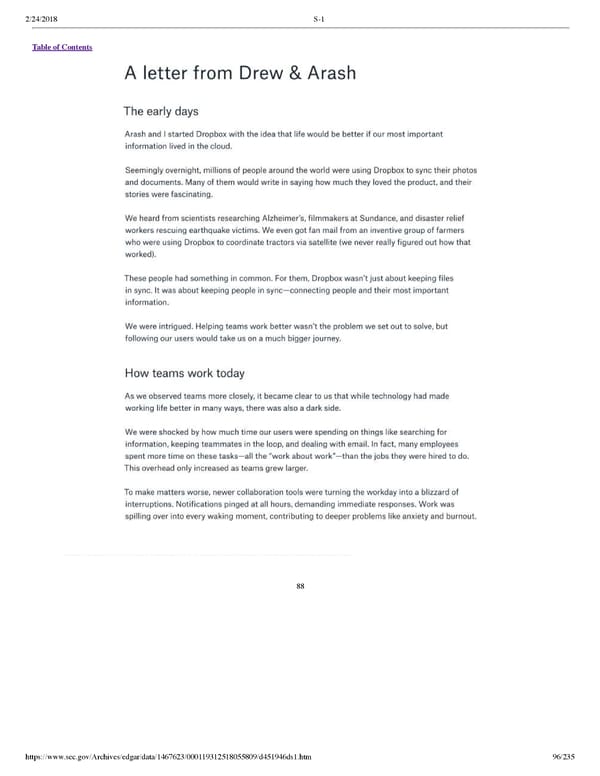2/24/2018 S-1 Table of Contents A letter from Drew & Arash The early days Arash and I started Dropbox with the idea that life would be better if our most important information lived in the cloud. Seemingly overnight, millions of people around the world were using Dropbox to sync their photos and documents. Many of them would write in saying how much they loved the product, and their stories were fascinating. We heard from scientists researching Alzheimer’s, filmmakers at Sundance, and disaster relief workers rescuing earthquake victims. We even got fan mail from an inventive group of farmers who were using Dropbox to coordinate tractors via satellite (we never really figured out how that worked). These people had something in common. For them, Dropbox wasn’t just about keeping files in sync. It was about keeping people in sync—connecting people and their most important information. We were intrigued. Helping teams work better wasn’t the problem we set out to solve, but following our users would take us on a much bigger journey. How teams work today As we observed teams more closely, it became clear to us that while technology had made working life better in many ways, there was also a dark side. We were shocked by how much time our users were spending on things like searching for information, keeping teammates in the loop, and dealing with email. In fact, many employees spent more time on these tasks—all the “work about work”—than the jobs they were hired to do. This overhead only increased as teams grew larger. To make matters worse, newer collaboration tools were turning the workday into a blizzard of interruptions. Notifications pinged at all hours, demanding immediate responses. Work was spilling over into every waking moment, contributing to deeper problems like anxiety and burnout. 88 https://www.sec.gov/Archives/edgar/data/1467623/000119312518055809/d451946ds1.htm 96/235
 Dropbox S-1 | Interactive Prospectus Page 95 Page 97
Dropbox S-1 | Interactive Prospectus Page 95 Page 97